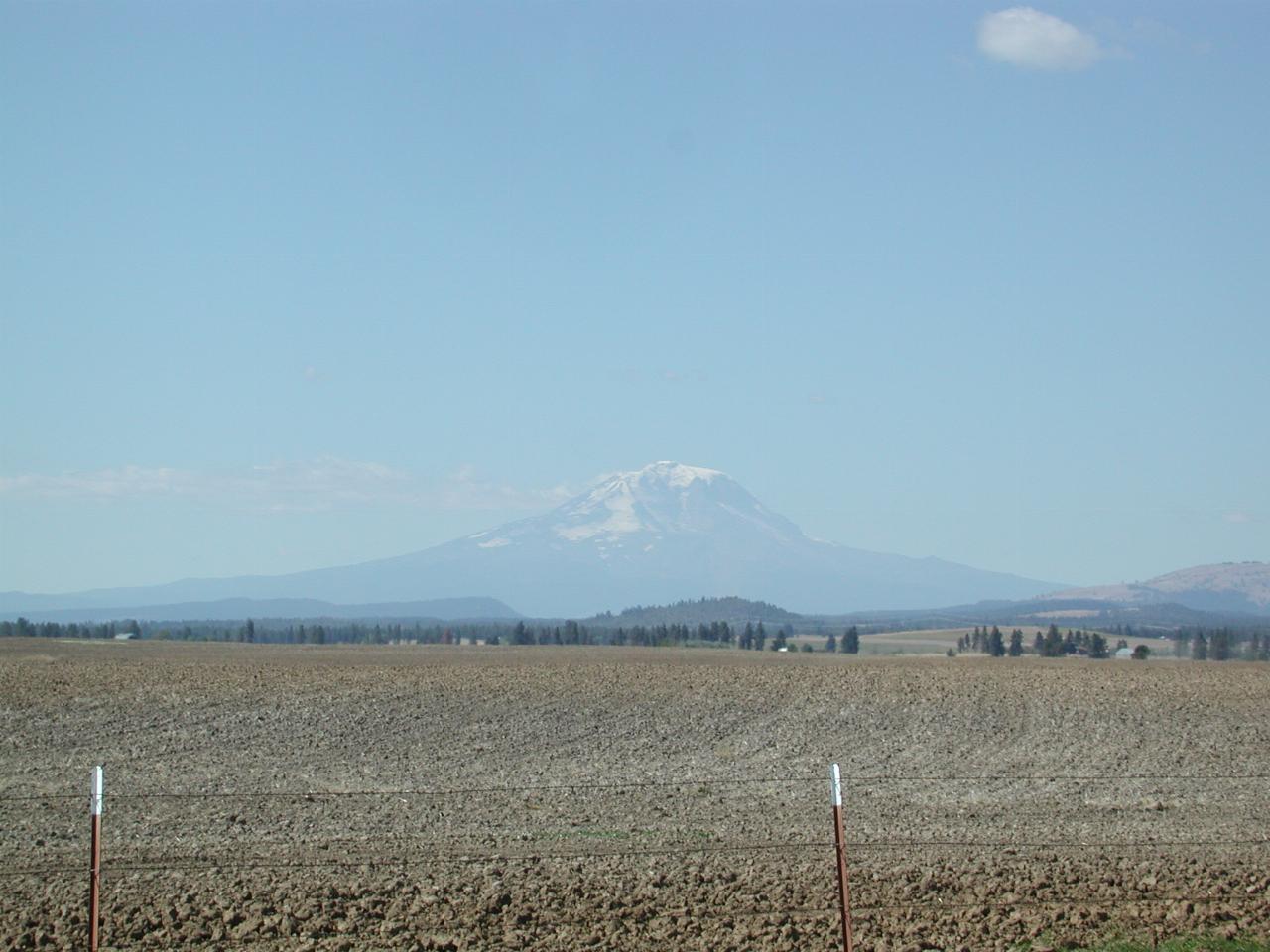

As seen from just off SR 142 near Goldendale.
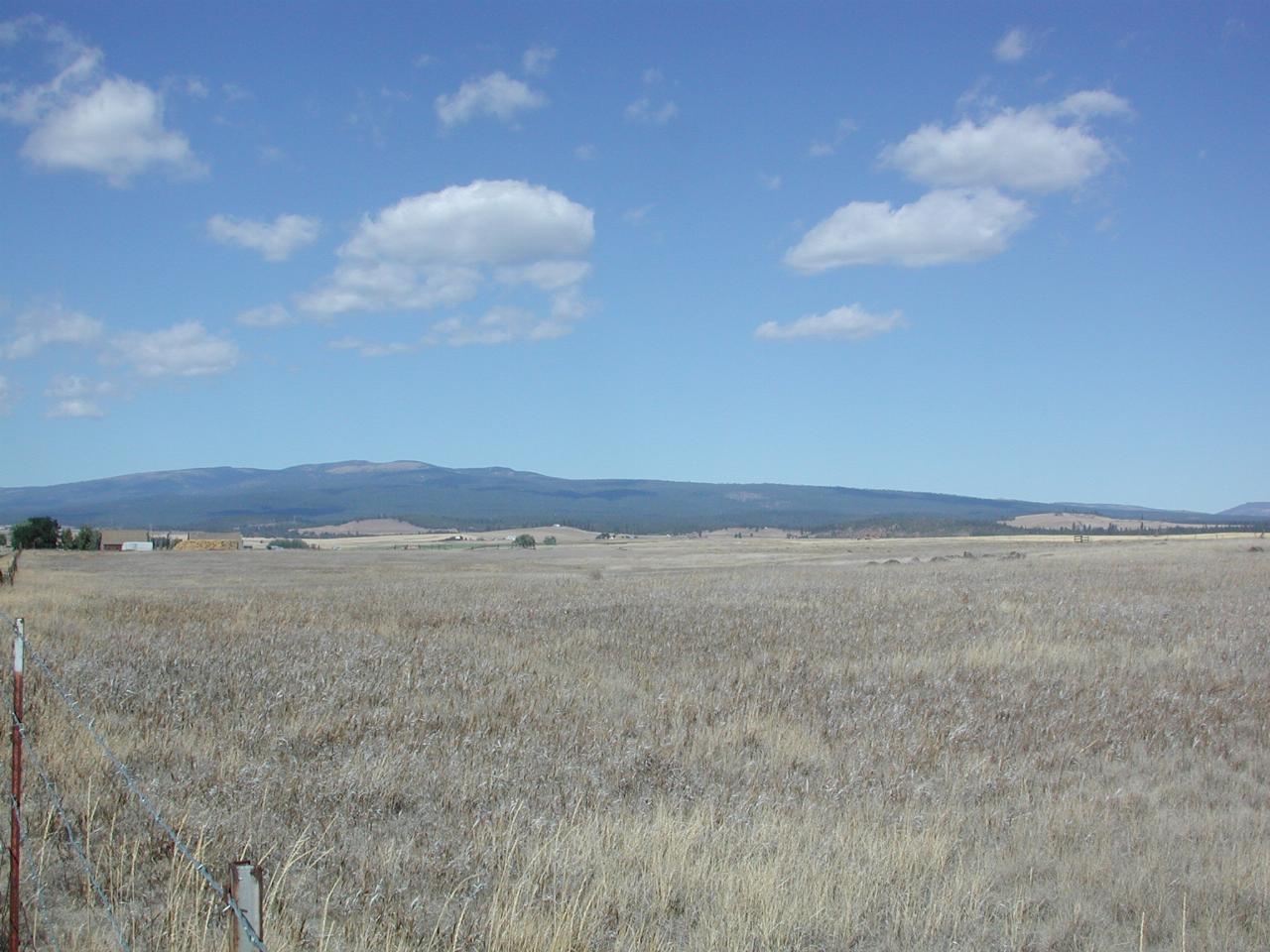
Simcoe Ranges, just north of Goldendale, as viewed from just off SR 142. The state of the field here shows why Eastern Washington is known as "the dry side".
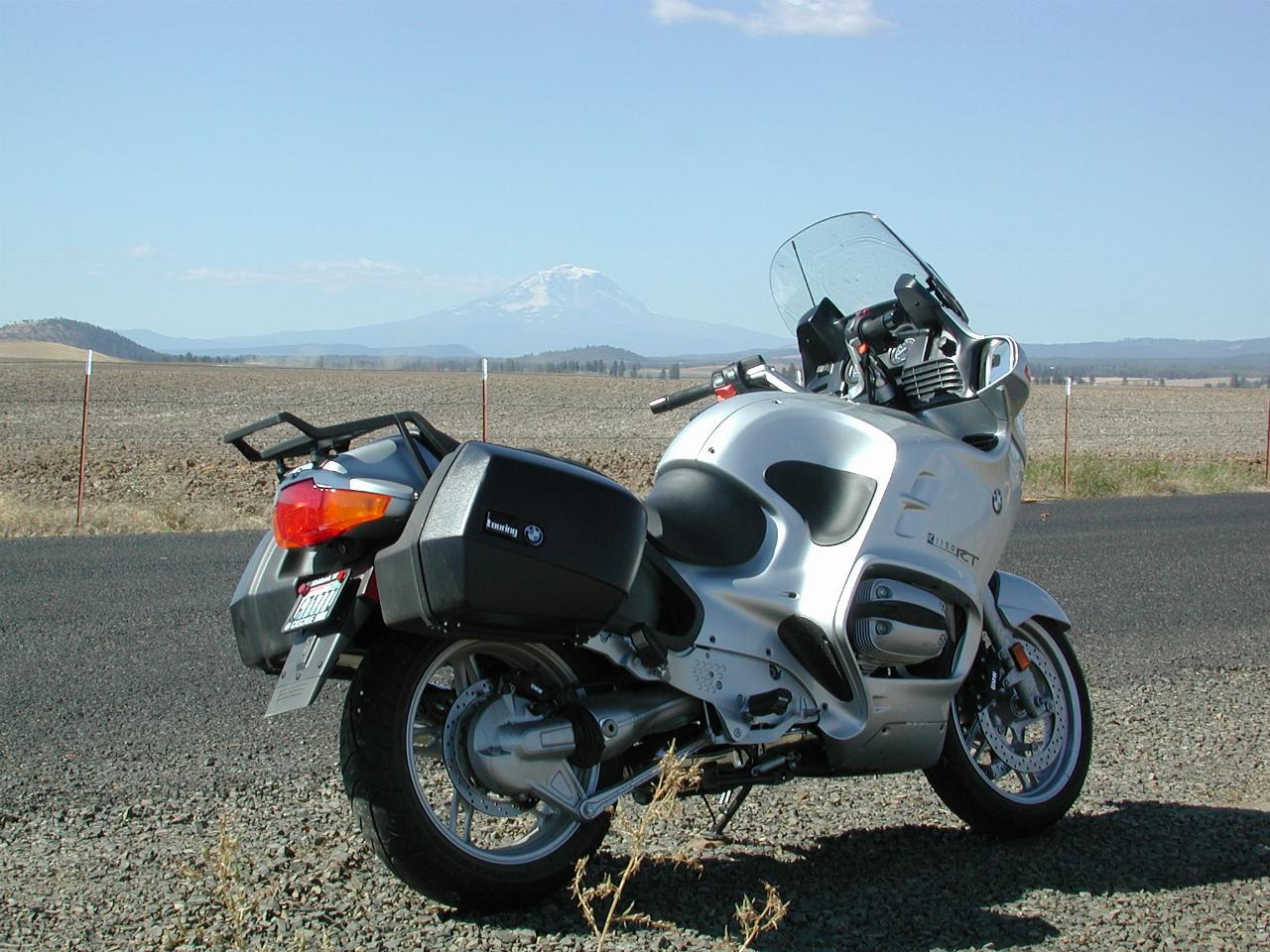
The "RT" waiting patiently for the photographer to finish, with Mt. Adams in the background!
The information display at this location describes the climate thus:
East of the protective Cascade Range, the sky is less cloudy and the plateaus are drier. Upland ponderosa pine woodlands descend to oak savannah, and to desert sage and grasslands.
The Columbia River Gorge is a meeting place of worlds separated by the Cascade Mountains. It boasts five distinct "vegetation zones", plant communities adapted to the local climate.
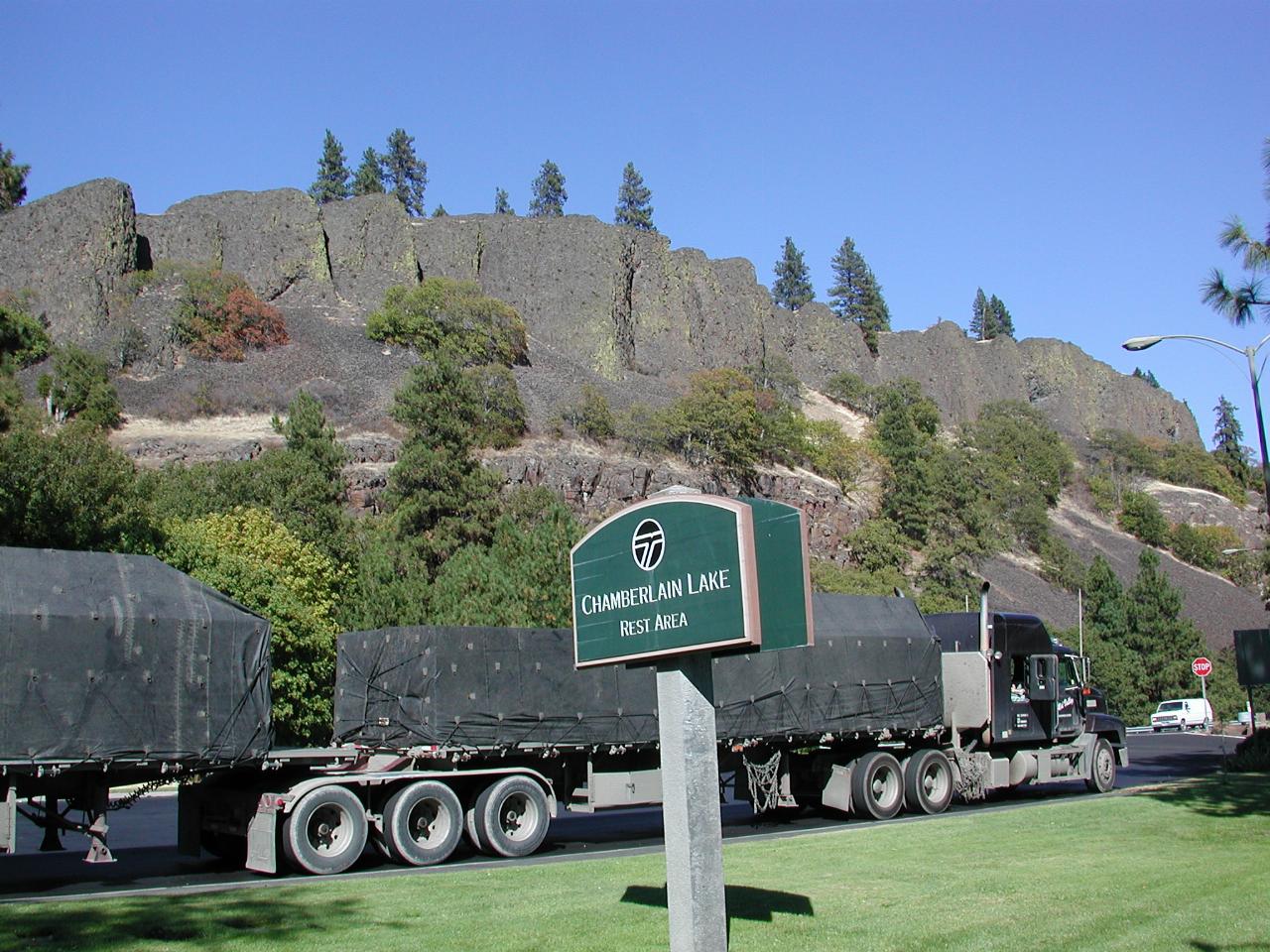
The Chamberlain Lake Rest Area is located on SR 14, just near White Salmon.
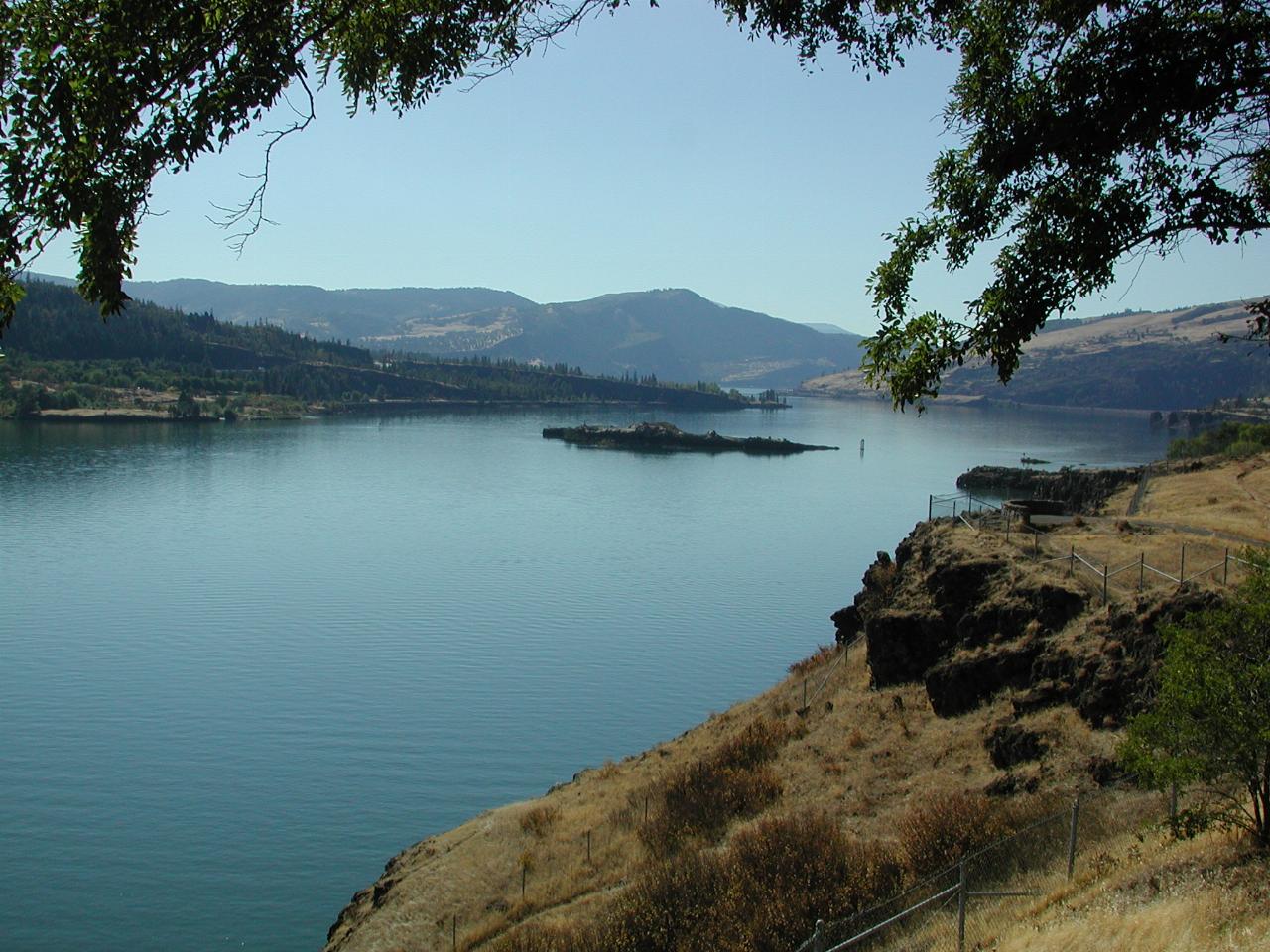
Looking west along The Columbia towards the fertile and wet coastal areas.
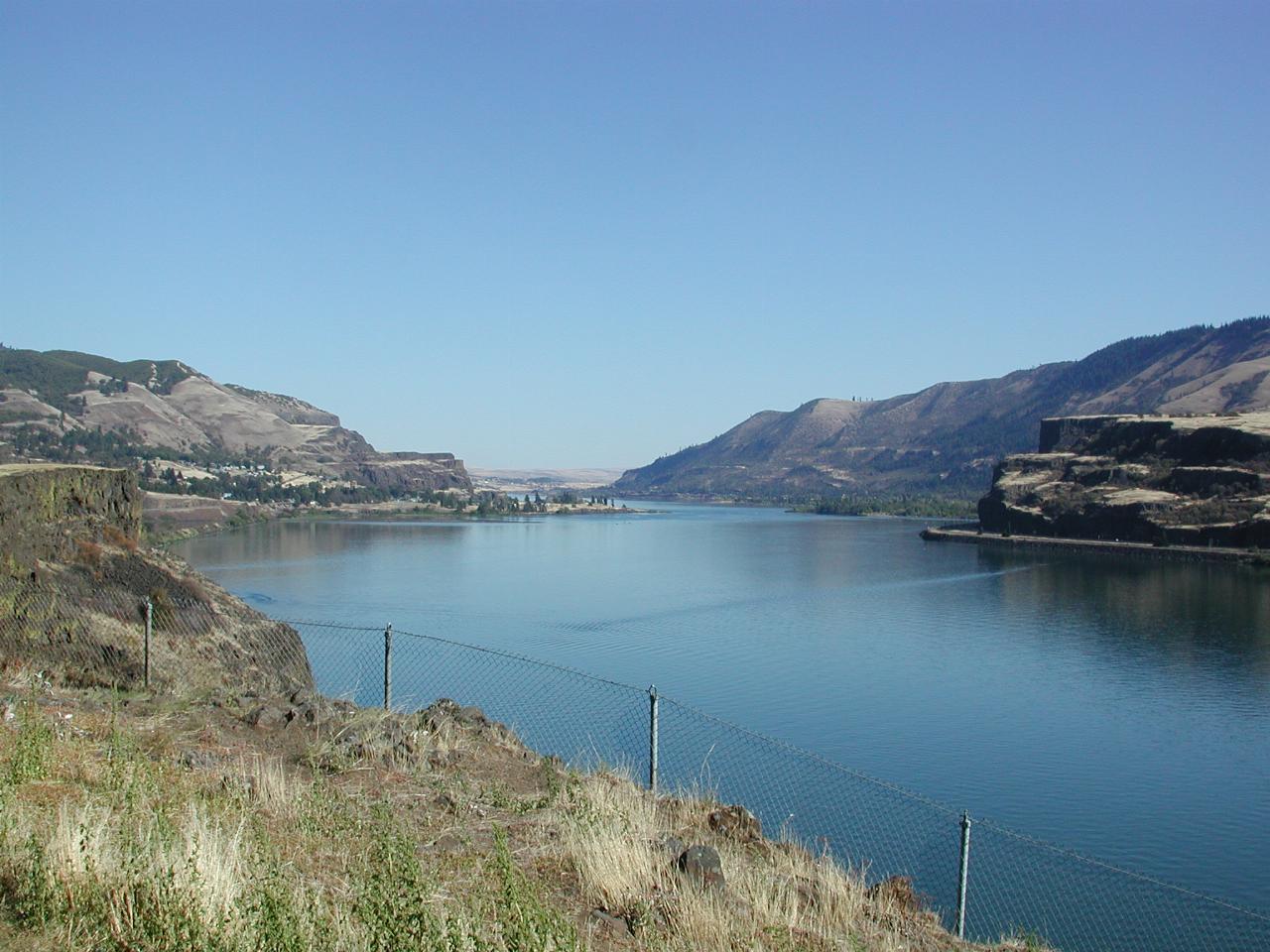
Looking east, into the drier hinterland.